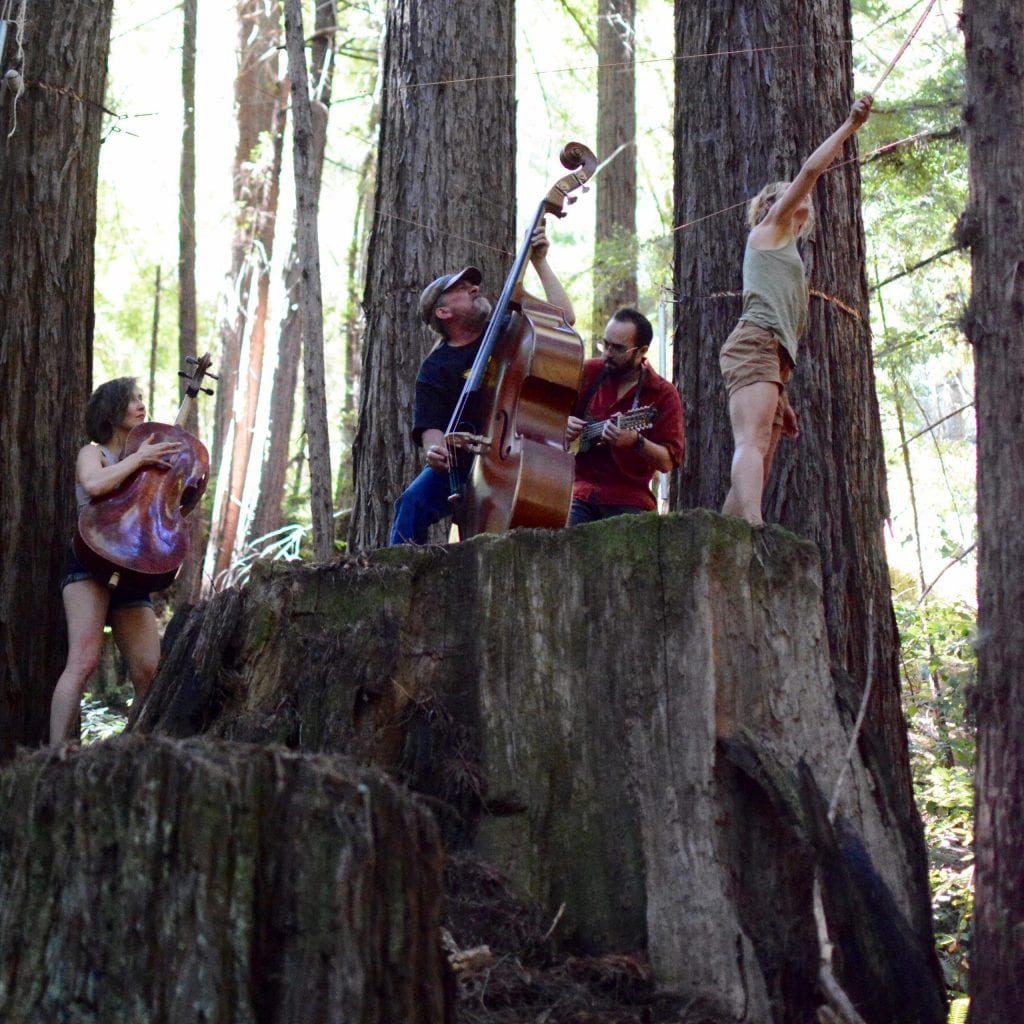Roots Harmonic performance in Djerassi, California: Closing improvisation of emergent sounds, with Sebastián Pérez, Dasha Lavrennikov, Kevin Kelsey, Anya Yermakova
Inserting my body into historical research has been the main concern of my CMP work. The traces left behind by dead human bodies that is the archive; the negative space of those archives for all the traces that weren’t left. Both together – still do not sum up to the embodied understanding of those somas, their way of being in the world.
Lurking, echoing a distant past, hiding in the corners of evolving structures, surviving through the fabric of progress – some epistemes of these bodies persisted. However faint the echo, with which mode of attention must I listen to hear the resonance of this embedded history?

At a recent art-science residency in Djerassi, California, I experimented with methods that could bring me closer to this multi-modal way of listening. I was joined by astrophysicist and musician Sebastián Pérez and by dancer and philosopher Dasha Lavrennikov. Our collective hybrid ways of being were central to the collaboration.
We situated our experiment among the exposed roots of redwood tree stumps. We dressed (literally) in 100-year-old musings on functional analysis, and played with emergent rhythms (visual and sonic) of found objects. All this, to bring me closer to the thought experiments – the hypotheticals that might have passed through these distant bodies. To empathize with the somatic experience of the early 20th century scholars of the Russian Empire experimenting with, embracing – contradictions, polyrhythmy, and flux.
The video below is a micro summary of this endeavor, and another experiment towards defining this method of artscience for historiography. Perhaps the most important finding from this artistic research in Djerassi was that art-science is most useful not actually as a connection between art and science. It is most useful when understood as an artistic invitation for flow between “human sciences” and “hard sciences.” In my particular case it is a body-centered performance, between critical history and mathematical logic.
Roots Harmonic from Anya Yermakova on Vimeo.
